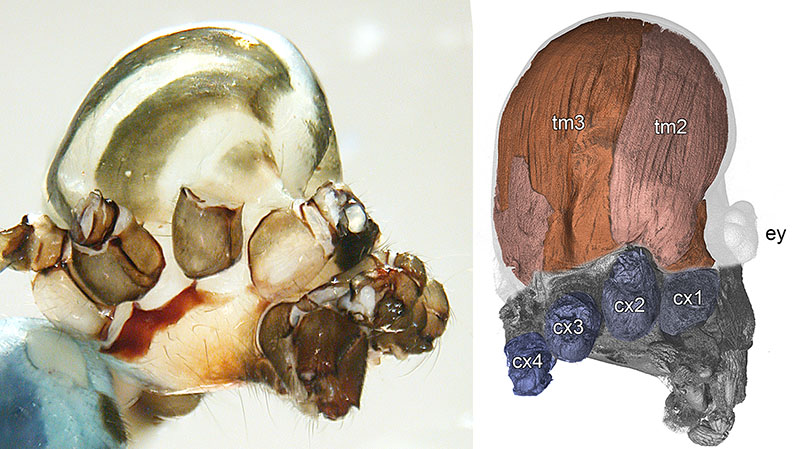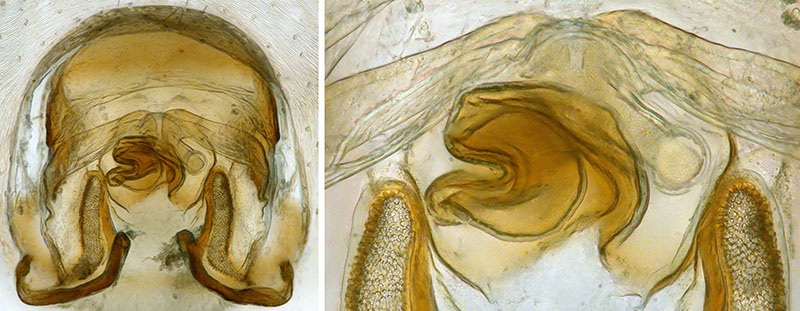
A molecular phylogenetic analysis of Mecolaesthus and related genera greatly expands the taxon sampling compared to previous analyses (from nine to 46 species representing the “Venezuelan clade” of genera) but remains ambiguous regarding the monophyly of Mecolaesthus. The new species from Ecuador are part of an Amazonian-West Indian clade. Whether this clade is sister to ‘true’ (northern Venezuelan) Mecolaesthus or not remains unclear. The two clades occupy different major Neotropical biogeographic regions.
In addition, we present first µ-CT data of the unique prosoma ‘inflation’, showing that these ‘inflations’ are tightly packed with muscles inserted at the leg coxae, mainly of legs 2 and 3. Male (but not female) leg length is negatively correlated with body size, which is highly unusual in Pholcidae. We predict that male-male fights in Mecolaesthus rely on powerful leg movements of legs 2 and 3 rather than on using legs 1 to assess the opponent’s body size.

Finally, we document structural genital asymmetry in females of three of the four new species and in M. putumayo Huber, 2000 (of which the female is newly described). This constitutes the fourth known case of structural genital asymmetry in Pholcidae.
